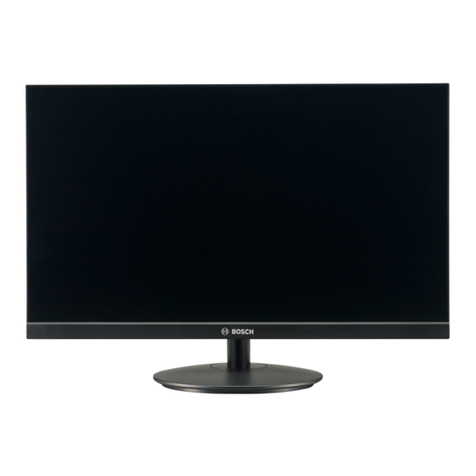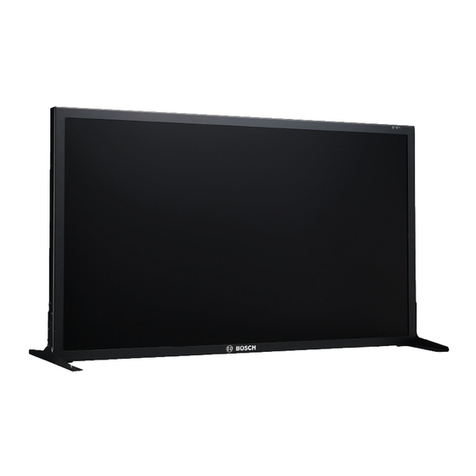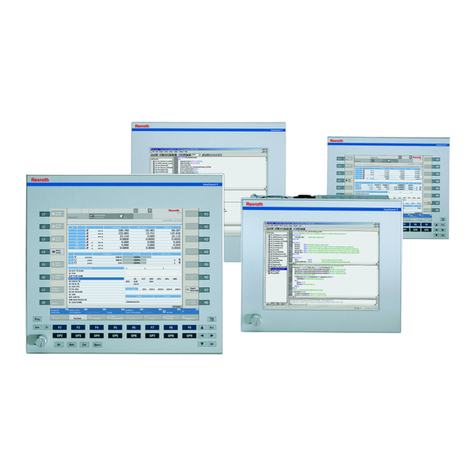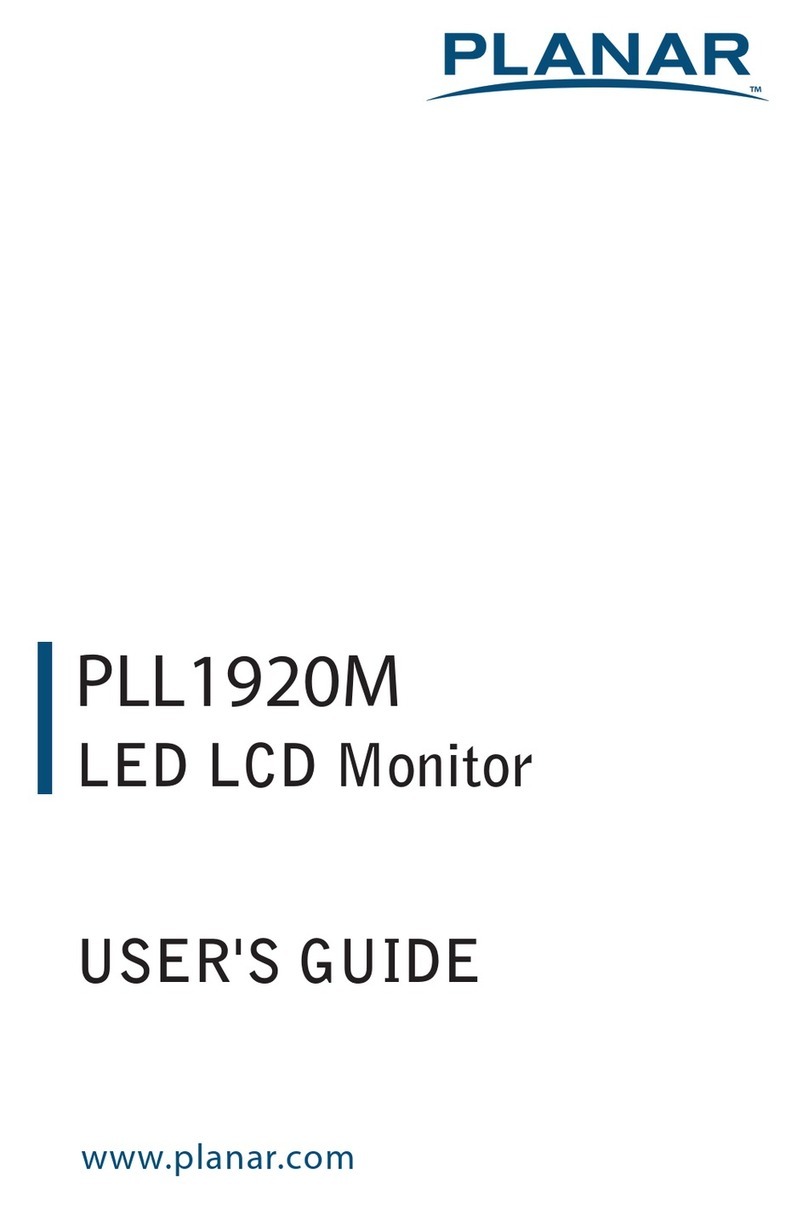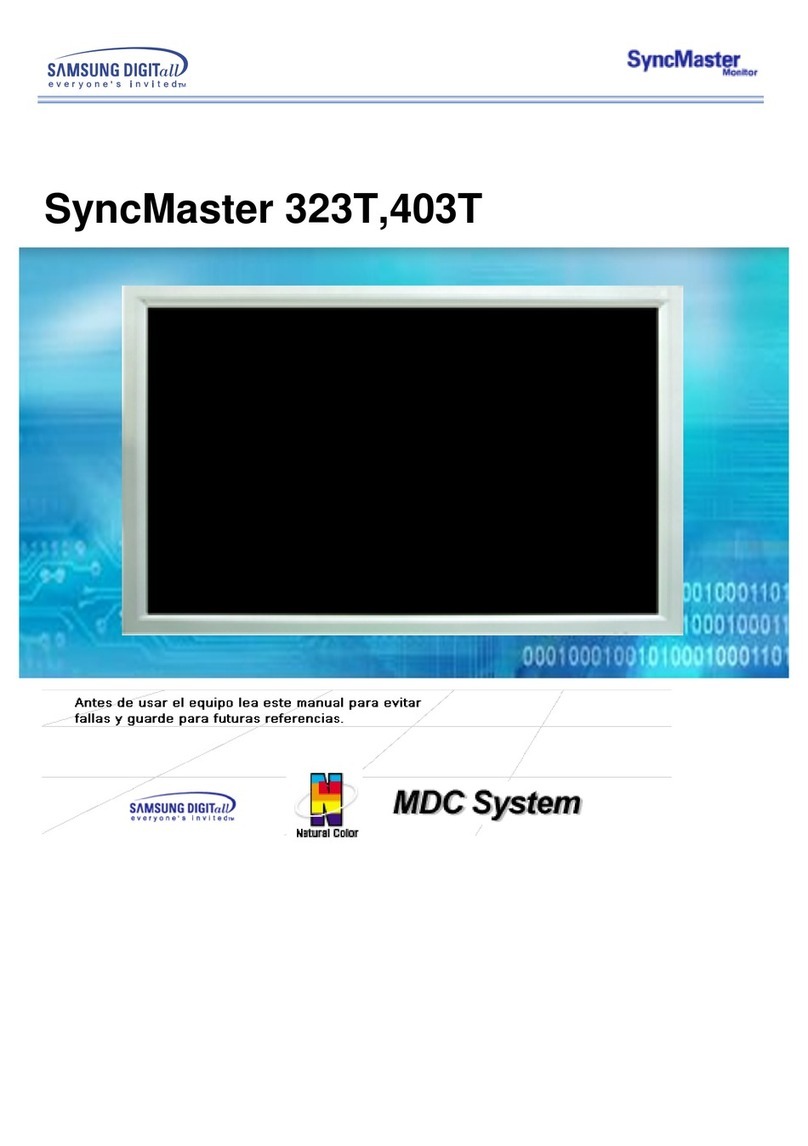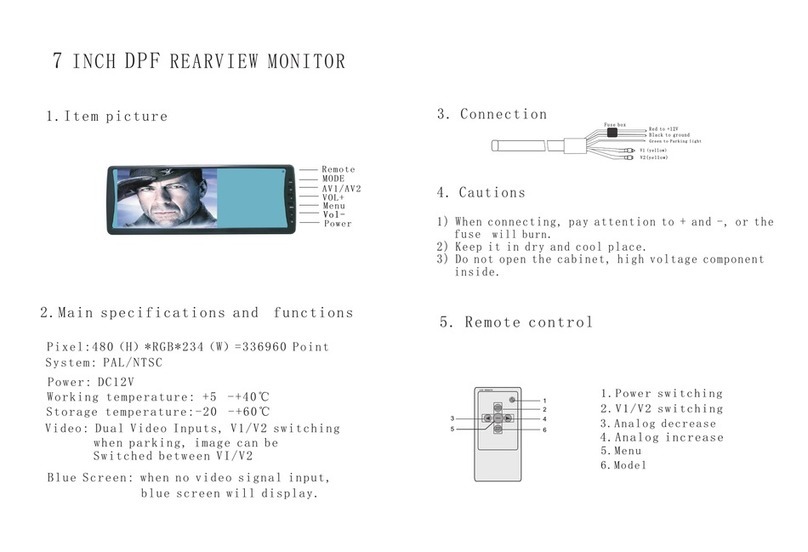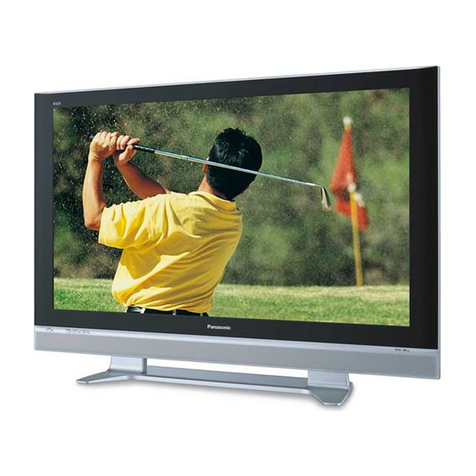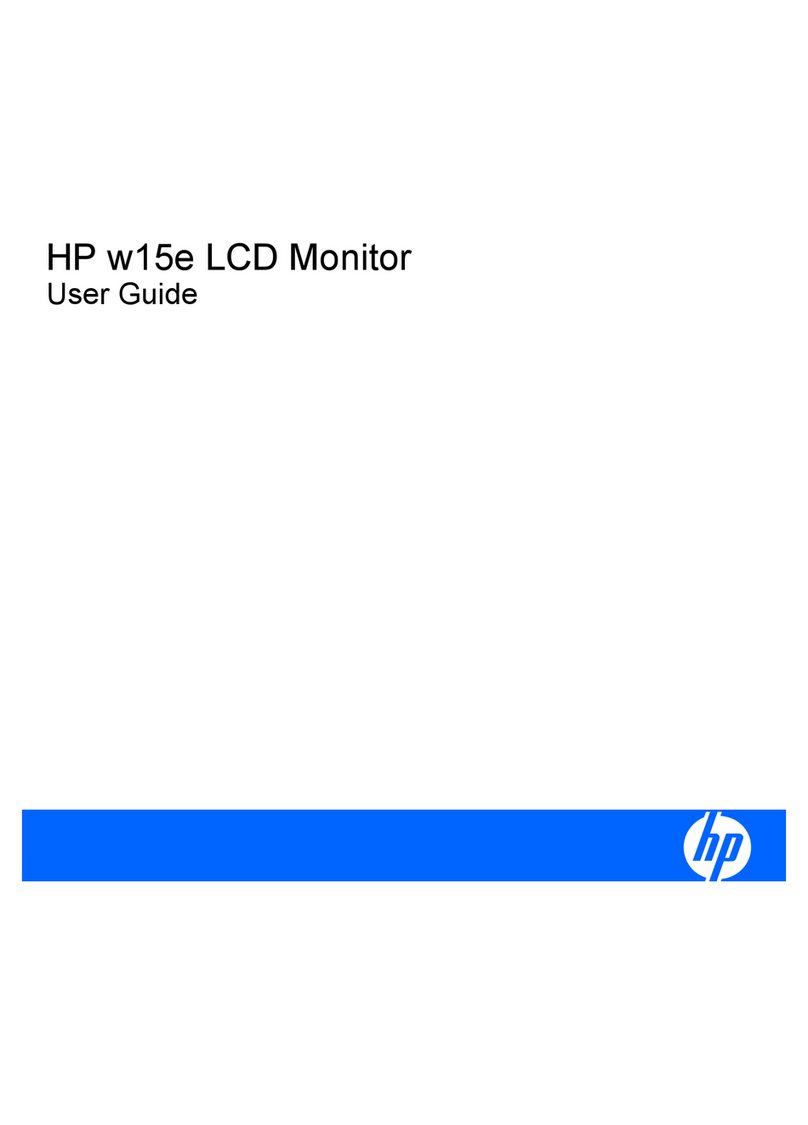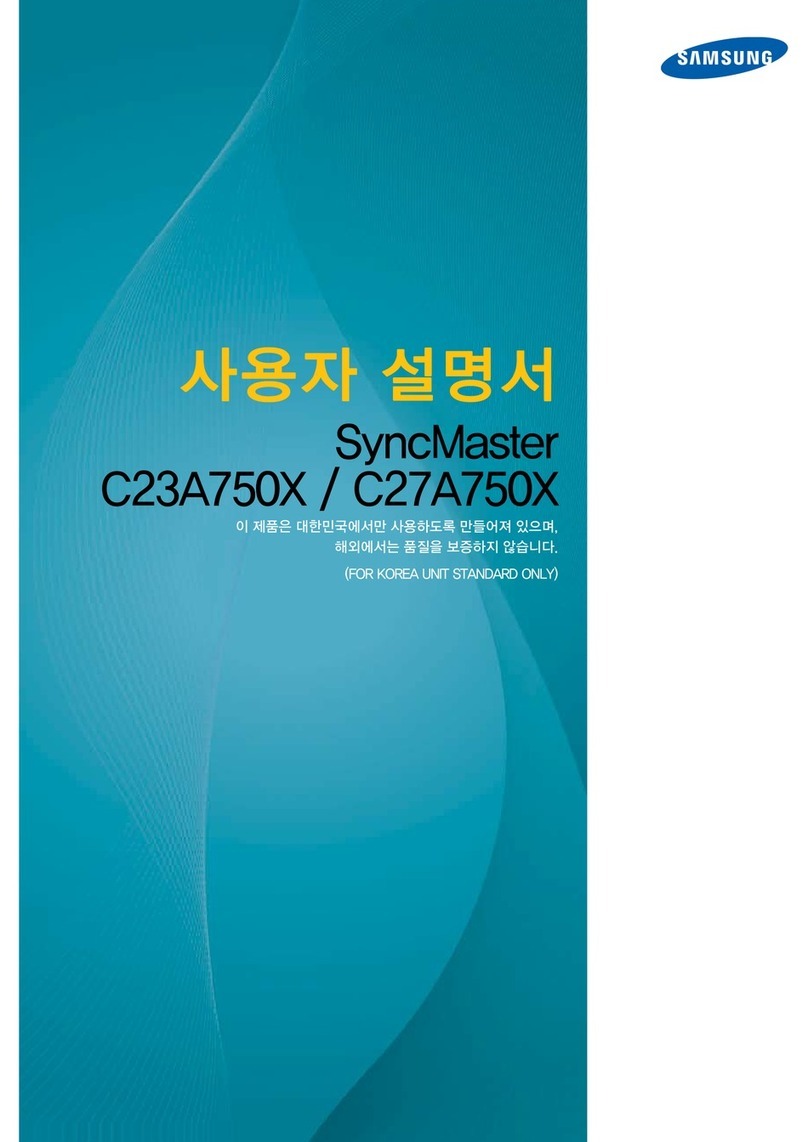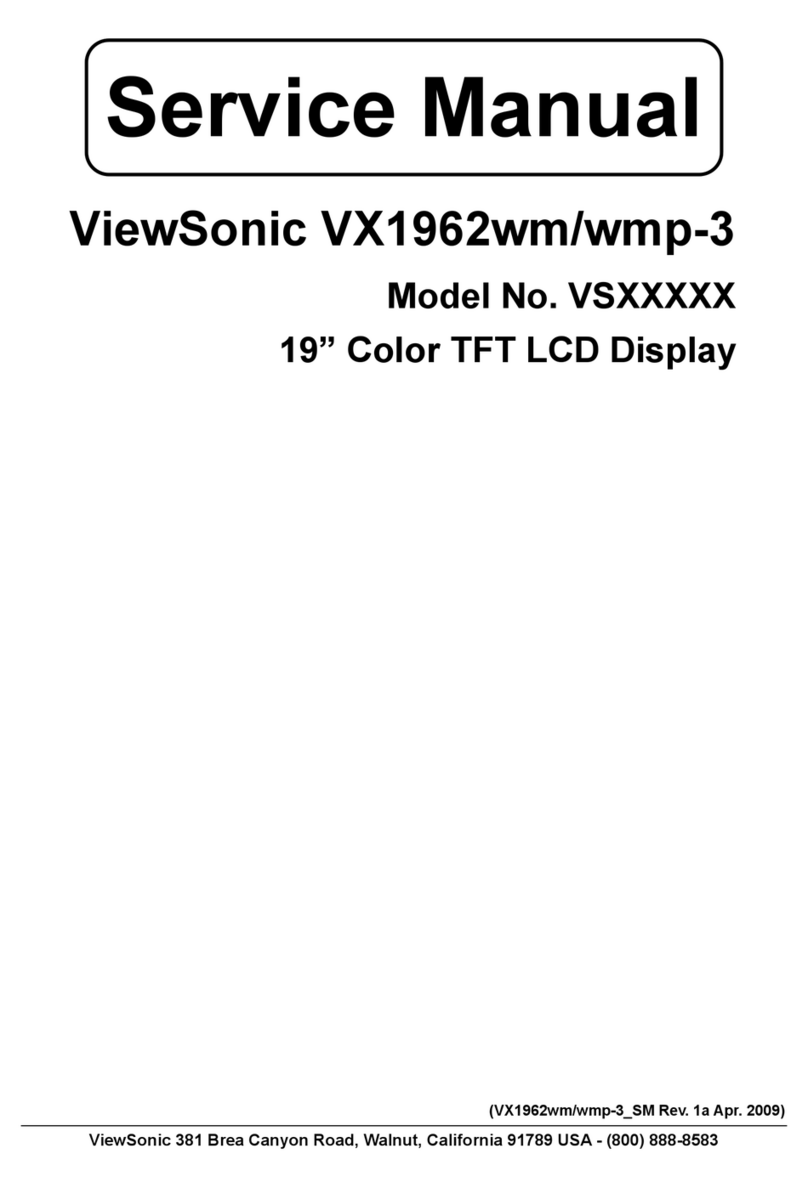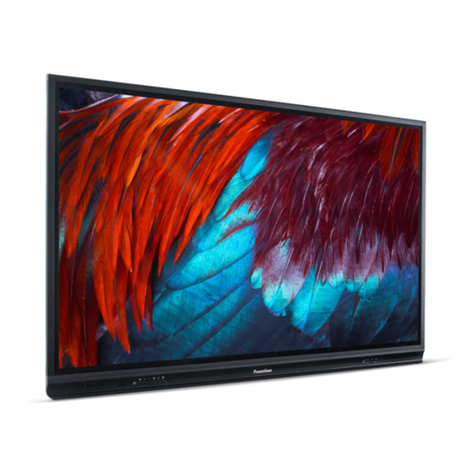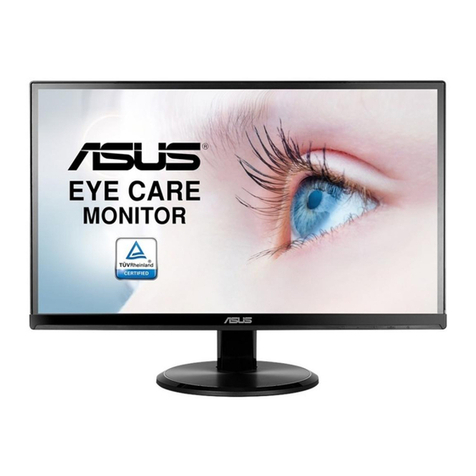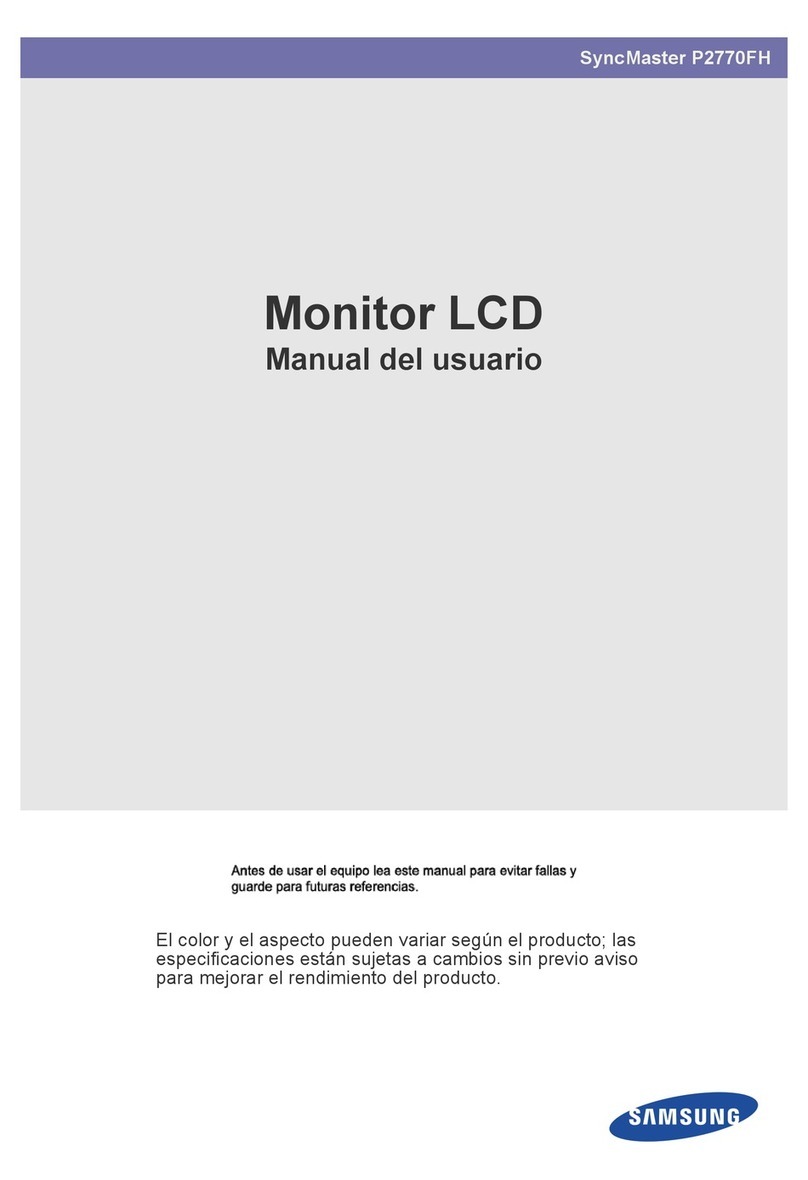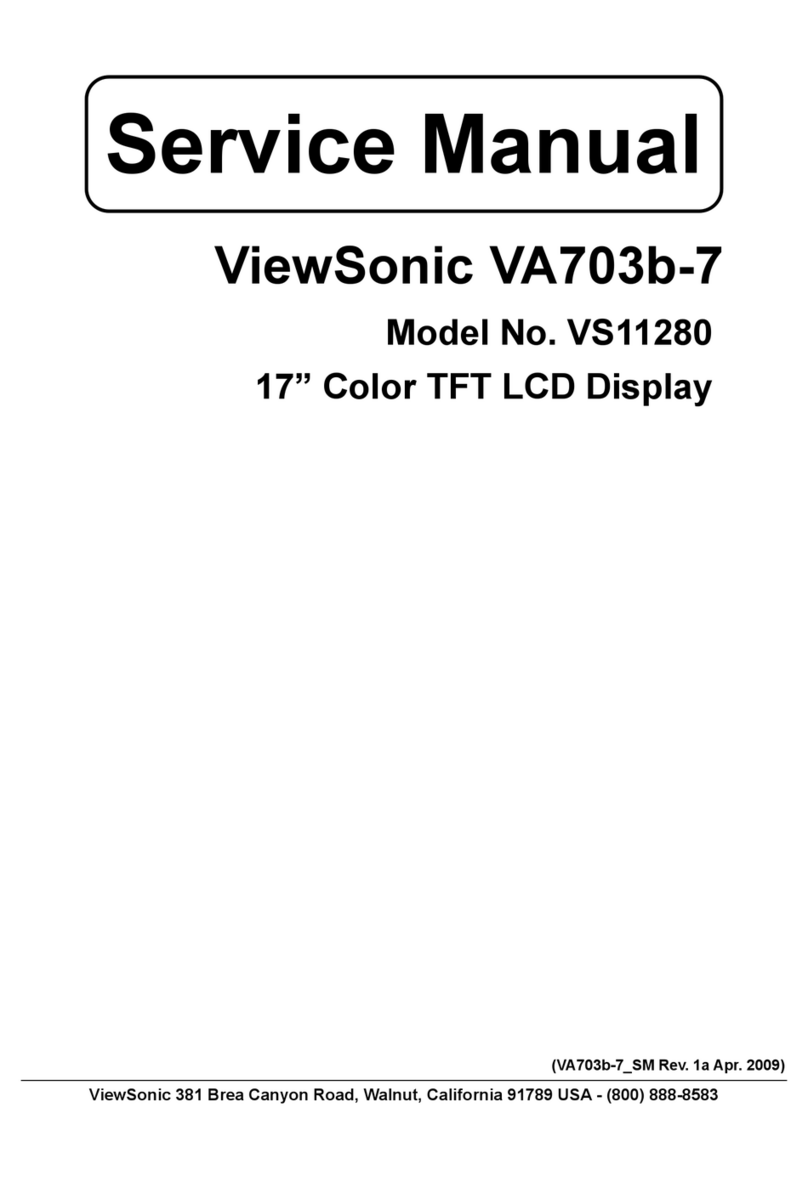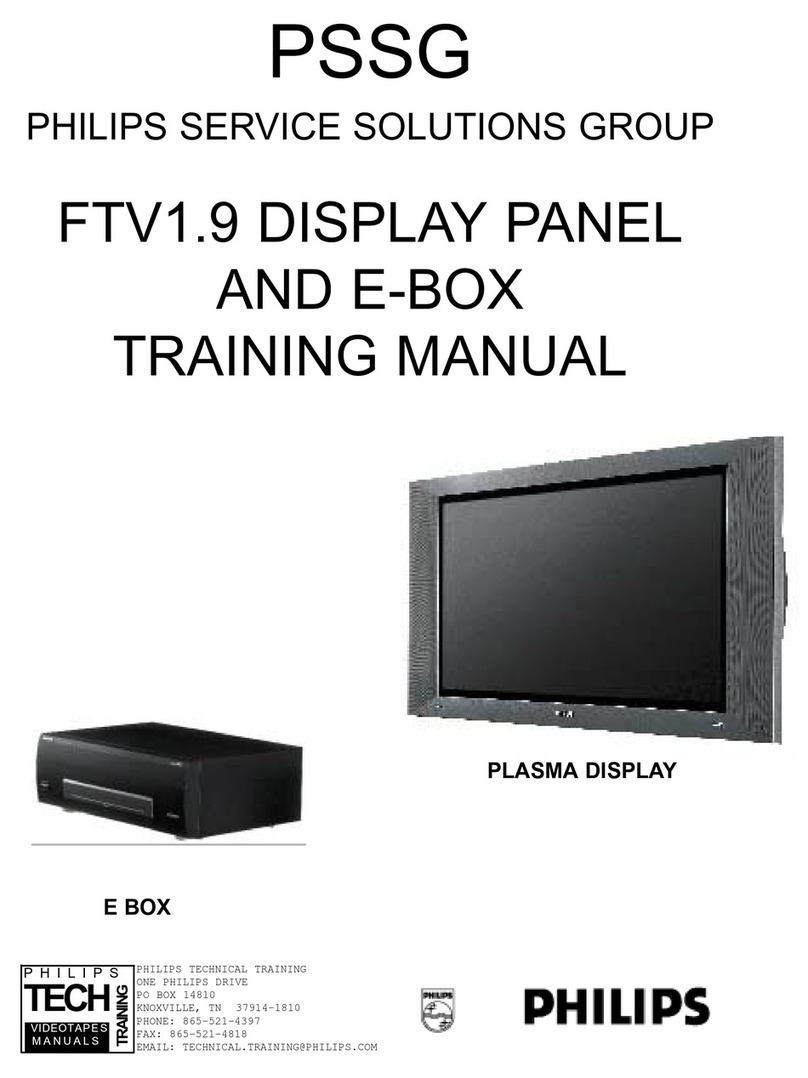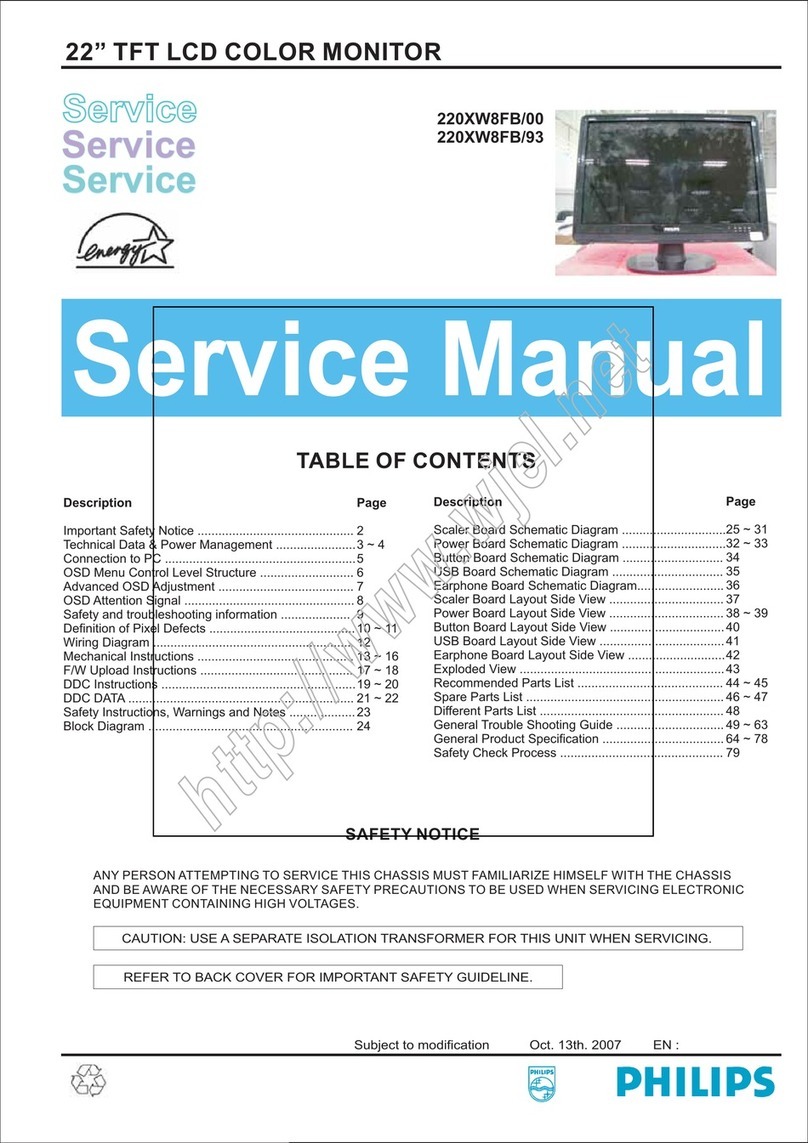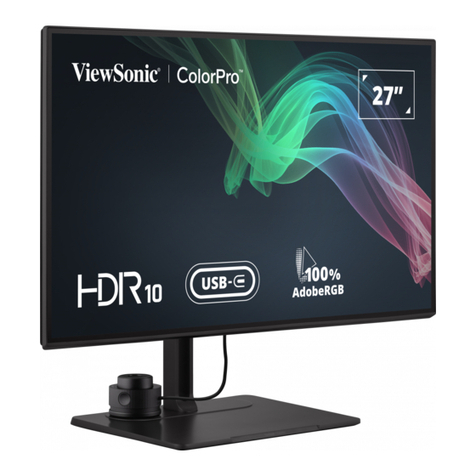Bosch DDU 9 User manual

Display DDU 9
Manual
Version 1.0 14/03/2019

Content
ii/148 DDU 9 Bosch Motorsport
Content
1 Onboard Network Concept............................................................................................................................................ 4
2 Preparation...................................................................................................................................................................... 5
3 Power Supply .................................................................................................................................................................. 6
4 Error Memory .................................................................................................................................................................. 7
4.1 Error memory representation in RaceCon .................................................................................................................................................. 7
4.2 Information on errors available from the error memory ...................................................................................................................... 9
4.3 Analog Input Diagnosis...................................................................................................................................................................................... 13
5 Technical Data................................................................................................................................................................. 15
6 Disposal............................................................................................................................................................................ 19
7 Inputs and Outputs......................................................................................................................................................... 20
7.1 Input channels ....................................................................................................................................................................................................... 20
7.2 Output channels.................................................................................................................................................................................................... 20
7.3 Communication channels.................................................................................................................................................................................. 20
8 Mechanical Drawing ....................................................................................................................................................... 22
9 Starting up....................................................................................................................................................................... 23
9.1 Before starting ....................................................................................................................................................................................................... 23
9.2 Feature activation................................................................................................................................................................................................. 28
9.3 First display configuration (Quick Start) ...................................................................................................................................................... 30
9.4 First recording (Quick Start) ............................................................................................................................................................................. 32
9.5 Set time and date ................................................................................................................................................................................................. 35
10 Display Configuration .................................................................................................................................................... 38
10.1 Display page setup .............................................................................................................................................................................................. 38
10.2 Display element configuration ........................................................................................................................................................................ 39
10.3 LEDs ........................................................................................................................................................................................................................... 47
10.4 Page select / Display brightness / LED brightness.................................................................................................................................. 51
10.5 Math and condition channels.......................................................................................................................................................................... 62
10.6 Condition channels.............................................................................................................................................................................................. 65
10.7 CPU Load Limits .................................................................................................................................................................................................... 68
11 CAN Bus ........................................................................................................................................................................... 70
11.1 CAN bus trivia ........................................................................................................................................................................................................ 70
11.2 CAN input................................................................................................................................................................................................................ 71
11.3 CAN output............................................................................................................................................................................................................. 75
12 Analog and Frequency Inputs ....................................................................................................................................... 78
12.1 Analog inputs......................................................................................................................................................................................................... 78
12.2 Configuring inputs ............................................................................................................................................................................................... 79
12.3 Configuring computed sources ...................................................................................................................................................................... 93
12.4 Hysteresis................................................................................................................................................................................................................. 94
13 Online Measurement ...................................................................................................................................................... 98
13.1 Setting up an online measurement............................................................................................................................................................... 98
13.2 Online calibration of measurement channels............................................................................................................................................ 103
13.3 Group adjustment ................................................................................................................................................................................................ 105
13.4 Online calibration of multipoint adjustment channels .......................................................................................................................... 108

Content
Bosch Motorsport DDU 9 iii/148
14 Recording......................................................................................................................................................................... 110
14.1 Features.................................................................................................................................................................................................................... 110
14.2 Configuration of recordings............................................................................................................................................................................. 110
14.3 Recording data on USB device........................................................................................................................................................................ 115
15 Lap Trigger ...................................................................................................................................................................... 120
15.1 Lap trigger (timing beacon).............................................................................................................................................................................. 120
15.2 Counting outing/laps/fragments ................................................................................................................................................................... 127
15.3 Lap timing................................................................................................................................................................................................................ 128
15.4 Segment timing..................................................................................................................................................................................................... 130
15.5 Countdown timer ................................................................................................................................................................................................. 131
16 GPS Sensor....................................................................................................................................................................... 132
16.1 GPS (Global Positioning System).................................................................................................................................................................... 132
16.2 Protocol.................................................................................................................................................................................................................... 132
16.3 Sensor recommendation ................................................................................................................................................................................... 132
16.4 Measurement labels ............................................................................................................................................................................................ 135
16.5 GPS troubleshooting........................................................................................................................................................................................... 136
17 Predated Laptime............................................................................................................................................................ 138
17.1 Setting up the predated laptime.................................................................................................................................................................... 138
17.2 Functionality and channel outputs ................................................................................................................................................................ 138
18 Firmware .......................................................................................................................................................................... 139
18.1 Firmware and configuration............................................................................................................................................................................. 139
18.2 Firmware update................................................................................................................................................................................................... 139
19 Clone the Unit ................................................................................................................................................................. 142
20 Fuel Consumption Calculation ...................................................................................................................................... 144
20.1 Setting up fuel consumption calculation and tank management..................................................................................................... 144
20.2 Fuel consumption diagnosis/counter reset................................................................................................................................................ 145
20.3 Example .................................................................................................................................................................................................................... 146
21 RaceCon Shortcuts.......................................................................................................................................................... 147

1 | Onboard Network Concept
4/148 DDU 9 Bosch Motorsport
1 Onboard Network Concept
G
Engine_GND
GND_Starpoint
Chassis
KL31
LS_GND_1
LS_GND_2
Main
Switch
UBAT
Star connection
(term30) positive terminal
Electric Loads
IGN-
Switch
KL15
SENSPWR5
SENSGND
active
Sensor
ANA_IN(xx) NTC
Sensor
ANA_IN(xy)
switched pos. terminal
Star connection
dig. sensors
(e.g. wheelspeed)
µC
As short as
possible
SENSPWR10
UBATT_FUSE
KL30
LS_SWITCH1…4
Bosch Motorsport
diagnosis connector
PC
Device
NOTICE
This schematic is not device specific, please see the section “Technical Data for the spe-
cifications of your device.

Preparation | 2
Bosch Motorsport DDU 9 5/148
2 Preparation
Use the DDU 9 only as intended in this manual. Any maintenance or repair must be per-
formed by authorized and qualified personnel approved by Bosch Motorsport.
Operation of the DDU 9 is only certified with the combinations and accessories that are
specified in this manual. The use of variant combinations, accessories, and other devices
outside the scope of this manual are only permitted when they have been determined to
be compliant from a performance and safety standpoint by a representative from Bosch
Motorsport.
Read the manual carefully and follow the application hints step by step. Do not hesitate to
contact us, contact data can be found on the last page of this document.
Disclaimer
Due to continuous enhancements, we reserve the rights to change any illustrations, pho-
tos and technical data within this manual.
Please retain this manual for your records.
NOTICE
In this document, all screenshots are created by way of example for a
display. Please consider this and replace the product names with the
name of your device.

3 | Power Supply
6/148 DDU 9 Bosch Motorsport
3 Power Supply
Please ensure that you have a good ground installation. That means:
– A ground that has a solid, low resistance connection to the negative battery terminal
– Connection should be free from dirt, grease, paint, anodizing, etc.
– Use large diameter wire
– More metal-to-metal contact is better!
The following notations for power signals are used:
– KL 15 is a switched battery rail controlled by the IGN-switch
– KL 30 is an unswitched battery positive rail (same as battery positive terminal)
– KL 31 is an unswitched ground rail (same as battery negative terminal)
Be careful to observe current limits of wires and connector pins!

Error Memory | 4
Bosch Motorsport DDU 9 7/148
4 Error Memory
In this chapter “Error Memory”, a lot of screenshots are created by way of example for
DDU 8. Please consider this and replace the product name ‘DDU 8’ in this case with the
name of your product.
4.1 Error memory representation in RaceCon
Bosch Motorsport devices feature an error memory. Information on errors can be visual-
ized via RaceCon (online measurement) or can be transmitted via telemetry.
4.1.1 Accessing the memory
The error memory can be accessed as shown in the illustration:

4 | Error Memory
8/148 DDU 9 Bosch Motorsport
The memory is situated inside the device and is non‐volatile. As a consequence, an error
which has occurred and has not been cleared by the user will remain in the error memory
even after a power cycle. The error state will then reflect if the error is still active or not.
An error is deleted from the list when
– the user actively clears the error memory
– the user updates the firmware
The error memory is not cleared by a configuration download and is not cleared by a
power cycle.
4.1.2 Clearing the error memory
There are two ways of clearing the error memory, both are shown in the following illustra-
tion:

Error Memory | 4
Bosch Motorsport DDU 9 9/148
4.2 Information on errors available from the
error memory
In general, properties of the error memory and properties of an individual error need to
be distinguished.
4.2.1 Error Memory Properties
The following property is available for the error memory itself:
– Error Status (device measurement label “error_state”)
0: no error present in memory
1: at least one inactive error present in memory, no active errors
2: at least one active error present in memory
If displayed in a measurement sheet, this property’s value (0, 1 or 2) is translated into a
verbal description:

4 | Error Memory
10/148 DDU 9 Bosch Motorsport
It is also represented by a color scheme within RaceCon (provided RaceCon is online with
the system):
0 (no error present in memory):
No orange border
MIL off (black)
No entries
1 (at least one inactive error present in memory, no active errors):
Constantly orange border
Info cycling through
errors, present in
error memory
MIL constantly orange

Error Memory | 4
Bosch Motorsport DDU 9 11/148
2 (at least one active error present in memory):
MIL blinking orange
Blinking orange border
Info cycling through
errors present in
error memory
4.2.2 Error Properties
The following channels are recognized and memorized inside the devices:
– Error type (device label “error_type_rotate”):
e.g. “below_threshold” for a violation of the minimum voltage range defined in the
configuration, “shortcut_Batt” for a shortcut to battery voltage etc.
– Error locations (device label “error_location_rotate”):
e.g. “ANA01” for an error concerning the first ANA channel
– Error durations
How long has the error been active? If an error encounters a non-active period before
being cleared from the memory and is then detected again, the error duration keeps
on accumulating. The number of active periods can be seen from the “number of oc-
currences”.
– Number of occurrences
How many times has the error been detected since the last time the error memory
was cleared.
– Error active state (device label “error_active_rotate”)
All failure modes are continuously diagnosed; any error detected will be written to the
error memory. Once an error is detected, it is qualified as “active”.
– 1 (TRUE) Error was detected in most recent diagnose run (active)

4 | Error Memory
12/148 DDU 9 Bosch Motorsport
– 0 (FALSE) Error is inactive: error was not detected in most recent diagnostic run,
however the error has not been cleared from the memory by the user and re-
mains in the non‐volatile memory
The aforementioned channels (error_active_rotate, error_location_rotate, error_type_ro-
tate) are device specific properties (e.g. C 60) and are not related to the complete Race-
Con project (e.g. “error no. 3 from the error memory”). Therefore, only one property label
is available in each device. The errors from the error memory (possibly more than one er-
ror possible per device) share these three labels. The labels cycle through the errors cur-
rently present in the memory and represent the respective property of each error period-
ically.
The following screenshot shows error properties, which can be displayed or logged:
Labels hold information
on error 1 (an ANA3 error)
Labels hold information
on error 2 ... n-1
Labels hold information
on error n (a CAN error)
After the last error and its error properties have been displayed, the labels will start again
with the first error in the error memory stack and its error properties will be displayed
again. Therefore, monitoring these labels over a sufficiently long period provides the in-
formation on all individual errors in the error memory.
To understand this behavior, it is recommended to observe the three labels in a measure-
ment sheet (while more than one error is active) and watch the values change periodically:
The verbal representation of the numerical codes of these labels can be visualized in the
properties window of the measurement page:

Error Memory | 4
Bosch Motorsport DDU 9 13/148
4.3 Analog Input Diagnosis
4.3.1 Monitoring limits / Shortcut Detection / Cable
Breakage
The pin diagnosis functionality (check whether measurement is within the desired range)
can be activated in the ANA pin setup wizard; to allow for a diagnosis regarding shortcut
to ground, shortcut to battery voltage and cable breakage, a minimum / maximum has to
be defined.

4 | Error Memory
14/148 DDU 9 Bosch Motorsport
4.3.2 Open Line Detection
The implementation of open line detection consists of pull up resistors being activated
and deactivated; evaluating the behavior of the measured value detects cable breakage,
regardless of the pull up resistor being activated by the user.
1. Open the Error Memory of the Device.
2. Click "start detection of cable".
3. Check the Error Memory for new fault entries, regarding "Open line errors".

Technical Data | 5
Bosch Motorsport DDU 9 15/148
5 Technical Data
The display DDU9 integrates a programmable full color dashboard display with a data
logging system for motorsport applications for a very competitive price. Additional input
devices can be connected via Ethernet and CAN buses.
Data Analysis Software WinDarab is available free of charge as “WinDarab V7 free” on our
website. A basic logging function of 100 channels with recording of 50 ms (3 GB) is always
included. The logger can be upgraded to full logging performance (max. 1 ms). In addition
a 2nd logging partition of 1 GB (e.g. for long term recording) can be activated.
Customers can implement own graphics, pictures etc. on the 12 freely configurable dis-
play pages. For quick data transfer from the car e.g. during pit stop, data copy to a USB
stick is available as an option. The stick is connected to the wiring harness for the DDU9.
The device comes with 4 analogue and 4 speed inputs as standard; further 12 analogue
inputs are available as optional upgrade.
Display – 5.7” graphic color display
– 12 user configurable display pages
– 10 multicolor freely configurable (RGB) LEDs
Resolution 640 x 480 pixel
Supported image file formats Bmp, gif, jpg, png, tif
Processor 667 MHz Dual Core
Converters 8 kHz AD converters with digital low pass
filter
Internal power source Li/Ion capacitor
Configurable math channels
User configurable CAN in/out messages
Sampling rate 50 ms (standard),
max. 1 ms (optional)
Online data compression
Logging rate Max. 600 kB/s
Recording channels 100 channels (standard),
up to 1,040 in total (optional)
Logged data download speed Max. 1,000 kB/s
Internal storage capacity 3 GB (standard),
plus 1 GB (optional)
LTE Ethernet telemetry support, GSM telemetry support
RS232 for GPS and telemetry
CCP-Master, data acquisition from ECU that support CAN calibration protocol (optional)
Mechanical Data
Size 151 x 126 x 33.5 mm
Weight 540 g
Protection Classification IP54 to DIN 40050, Section 9, Issue 2008
Operating temperature internal -20 to 85°C
Operating temperature Display -20 to 70°C

5 | Technical Data
16/148 DDU 9 Bosch Motorsport
Max. vibration Vibration profile 1 (see Appendix or
www.bosch-motorsport.com)
Electrical Data
Supply voltage 5 to 18 V
Inputs
Analog channels 4 standard, additional 12 optional
Input range 0 to 5 V
Resolution 12 bit
Switchable pull up resistor For all ANA_IN
Wheel speed inputs 4 Hall-effect or DF11, switchable
Outputs
Sensor supply 5 V ± 1 % (250 mA) 2
Sensor supply 10 V ± 1 % (250 mA) 1
Sensor supply U_Bat 250 mA 1
Sensor ground 4
Environment
External switch for page selection, 12 steps B 261 209 658-01
External switch for brightness adjustment or
page selection, 6 steps
B 261 209 659-01
Optional Upgrades
USB_DATA
USB-Port unlocked (Rugged USB flash drive
Bosch File System (BFS) format included,
works with Bosch File System (BFS) pre-
formatted USB Flash drive only)
F 02U V02 214-01
Adapter cable to USB-Port (included in Up-
grade USB_DATA)
F 02U V01 343-01
Adapter for wiring harness (included in Up-
grade USB_DATA)
F 02U 002 996-01
CCP_MASTER
CCP-Master (ASAP2 file from ECU manufac-
turer required)
F 02U V02 213-01
ETHER_TELE
LTE Ethernet Telemetry
F 02U V02 138-01
FULL_LOG_1
Enable full logging performance of 3 GB par-
tition 1
F 02U V02 304-01
FULL_LOG_2
Enable full logging performance of 1 GB par-
tition 2
F 02U V02 305-01
I_O EXTENS
Enable additional 12 analog input channels
F 02U V02 205-01

Technical Data | 5
Bosch Motorsport DDU 9 17/148
Connectors and Wires
Motorsport connector on Display AS-216-35 PN
Mating connector
AS-616-35 SN
F 02U 000 466-01
Pin Configuration
Pin Name Comment Status
1 KL_31 Incl.
2 KL_15 Incl.
3 KL_30 Incl.
4 Rev_In_3 Hall or DF11 switchable Incl.
5 Rev_In_1 Hall or DF11 switchable Incl.
6 KL_31 Incl.
7 CAN_2_L CAN speed selectable Incl.
8 Ethernet_2_TXP Incl.
9 Ethernet_2_TXN Incl.
10 Sens_Power_12V over current protected Incl.
11 Rev_In_4 Hall or DF11 switchable Incl.
12 Rev_In_2 Hall or DF11 switchable Incl.
13 Laptrigger_In Incl.
14 CAN_2_H CAN speed selectable Incl.
15 CAN_1_H CAN speed selectable Incl.
16 Ethernet_2_RXP Incl.
17 Sens_Gnd_4 fused Incl.
18 Sens_Power 5V over current protected Incl.
19 ANA_IN_3 3.01 kOhm switchable Incl.
20 ANA_IN_4 3.01 kOhm switchable Incl.
21 Time_Sync connection to Bosch ECU Incl.
22 CAN_1_L CAN speed selectable Incl.
23 Ethernet_screen Incl.
24 Ethernet_2_RXN Incl.
25 Sens_Gnd_3 fused Incl.
26 Sens_Power 5V over current protected Incl.
27 ANA_IN_7 3.01 kOhm switchable Opt.
28 ANA_IN_1 3.01 kOhm switchable Incl.
29 USB_Device_DP to Bosch USB stick Opt.
30 RS232_TX_Telemetry Incl.
31 Ethernet_1_TXP Incl.
32 Sens_Gnd_2 fused Incl.
33 Sens_Power_10V over current protected Incl.
34 ANA_IN_8 3.01 kOhm switchable Opt.
35 ANA_IN_10 3.01 kOhm switchable Opt.
36 USB_Device_Gnd to Bosch USB stick Opt.

5 | Technical Data
18/148 DDU 9 Bosch Motorsport
Pin Name Comment Status
37 USB_Device_DN to Bosch USB stick Opt.
38 RS232_RX_Telemetry e.g. GSM telemetry Incl.
39 Ethernet_1_TXN Incl.
40 Sens_Gnd_1 fused Incl.
41 ANA_IN_11 3.01 kOhm switchable Opt.
42 ANA_IN_9 3.01 kOhm switchable Opt.
43 RS232_TX_GPS Incl.
44 ANA_IN_16 3.01 kOhm switchable Opt.
45 USB_Device_Power to Bosch USB stick Opt.
46 Ethernet_1_RXP Incl.
47 ANA_IN_12 3.01 kOhm switchable Opt.
48 ANA_IN_6 3.01 kOhm switchable Opt.
49 ANA_IN_2 3.01 kOhm switchable Incl.
50 ANA_IN_13 3.01 kOhm switchable Opt.
51 ANA_IN_15 3.01 kOhm switchable Opt.
52 Ethernet_1_RXN Incl.
53 ANA_IN_5 3.01 kOhm switchable Opt.
54 RS232_RX_GPS for GPS sensor input Incl.
55 ANA_IN_14 3.01 kOhm switchable Opt.

Disposal | 6
Bosch Motorsport DDU 9 19/148
6 Disposal
Hardware, accessories and packaging should be sorted for recycling in an environment-
friendly manner.
Do not dispose of this electronic device in your household waste.
Waste electronic equipment must be disposed of properly according to Electrical and
Electronics Act (ElektroG) and the European WEE directive.

7 | Inputs and Outputs
20/148 DDU 9 Bosch Motorsport
7 Inputs and Outputs
7.1 Input channels
Analog inputs
The DDU 9 analog inputs accept an input signal of 0 to 5 V. A 3.01 kOhm pull-up resistor
can be activated by software.
Digital inputs
The digital inputs of the DDU 9 accept 0 V to 5 V signals of Hall-effect sensors by default.
Connect the output of the Hall-effect sensor to the REVn_P pin and leave the REVn_M pin
open.
7.2 Output channels
Sensor power supply
The DDU 9 has four sensor power supplies:2 x 5 V, 1 x 10 V and 1 x Ubat regulated
voltage. They are short circuit protected to battery voltage and GND.
7.3 Communication channels
CAN bus
The DDU 9 has two CAN buses configurable as input and output. Different baud rates are
selectable. Please note that the DDU 9 does not contain any CAN termination resistors.
Thus the CAN termination resistors need to be integrated into the wiring loom.
Ethernet channels
The DDU 9 has one 100 MBit full duplex Ethernet communication ports. The port is intern-
ally connected with an Ethernet switch. The Ethernet ports have 'cable auto crossover'
functionality.
RS232 ports
The DDU 9 has two RS232 serial ports. Baud rate for both ports is programmable. RS232
port 1 is reserved for online telemetry, port 2 can be used for reception of data from a
serial GPS receiver.
Vehicle diagnosis connector
The Bosch Motorsport vehicle diagnosis connector is used as a standard interface to con-
nect the vehicle to a PC e.g. via a MSA-Box II. Loom connector: AS0-12-35SN
Pin Name Description Used for DDU 9
Pin 1 Terminal 30 Permanent positive +
Pin 2 Terminal 15 Switched positive +
Pin 3 Terminal 31 GND +
Pin 4 CAN High Diagnostic CAN bus
Pin 16 CAN Low Diagnostic CAN bus
Table of contents
Other Bosch Monitor manuals
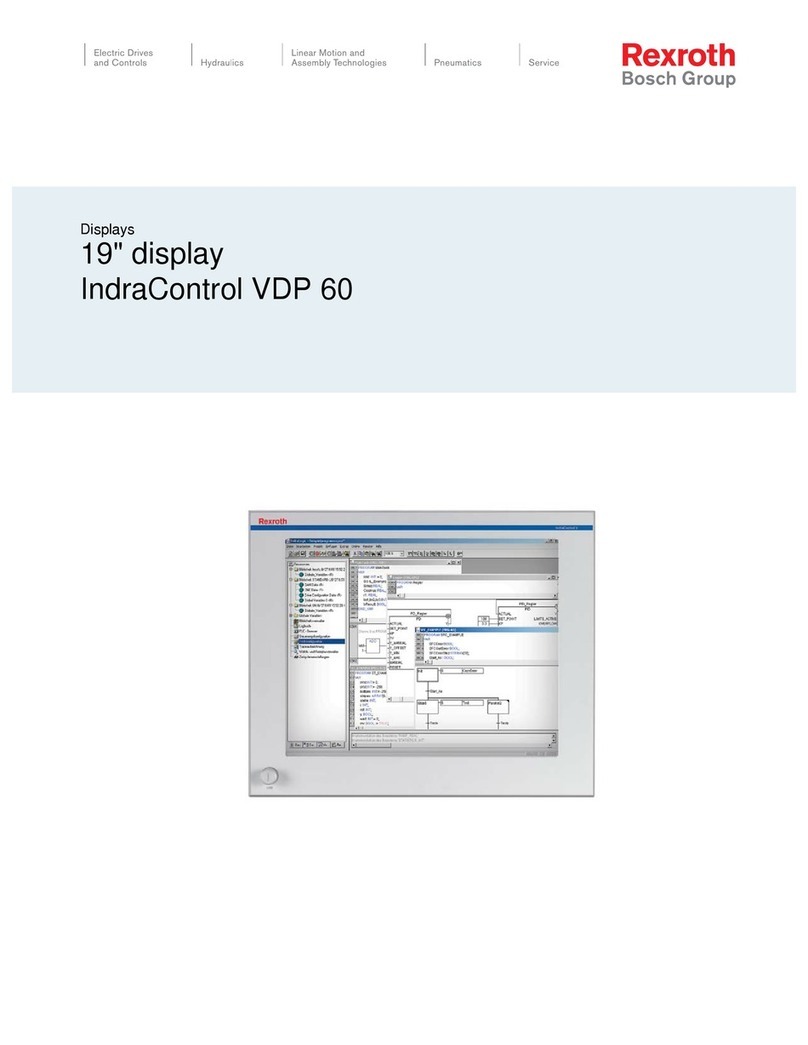
Bosch
Bosch IndraControl VDP 60 User manual
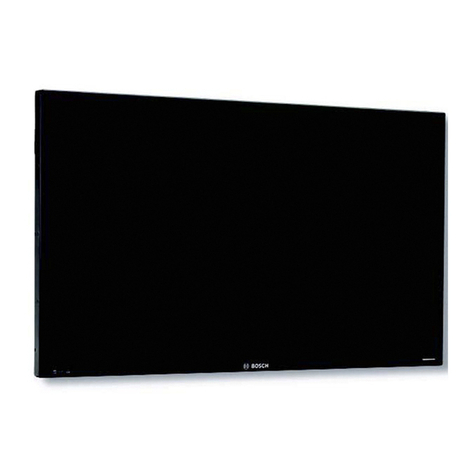
Bosch
Bosch UML-323-90 User manual

Bosch
Bosch UML-151 User manual
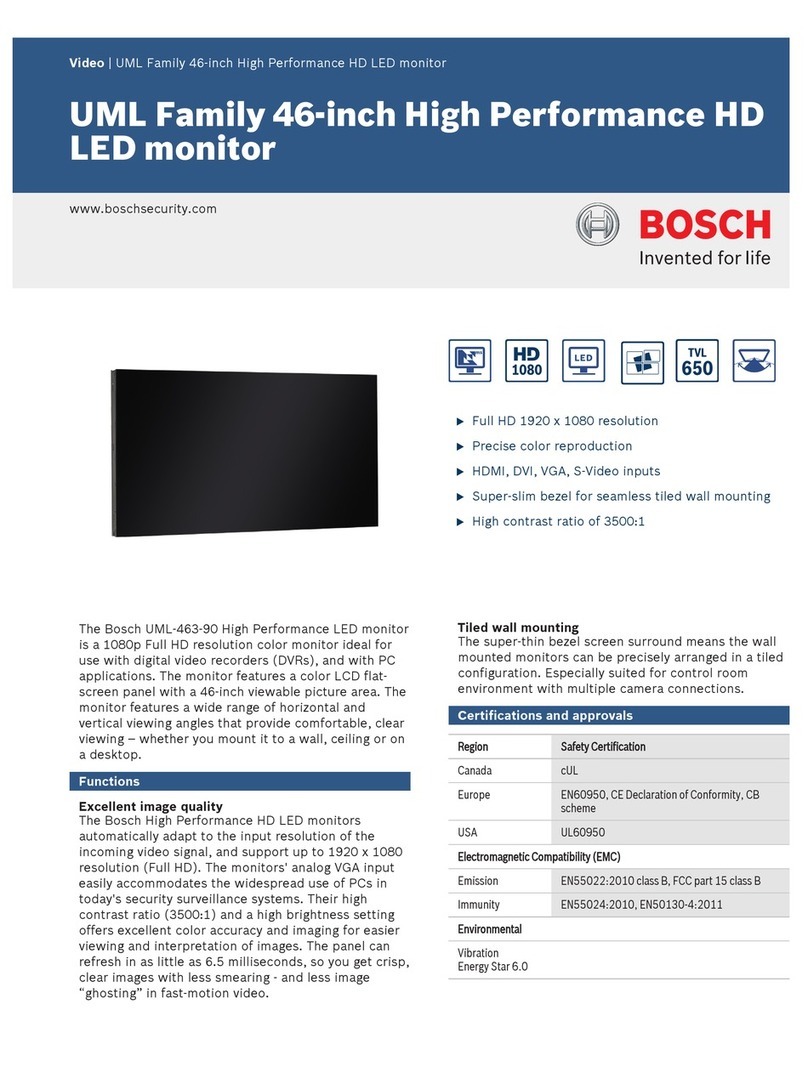
Bosch
Bosch UML-463-90 User manual
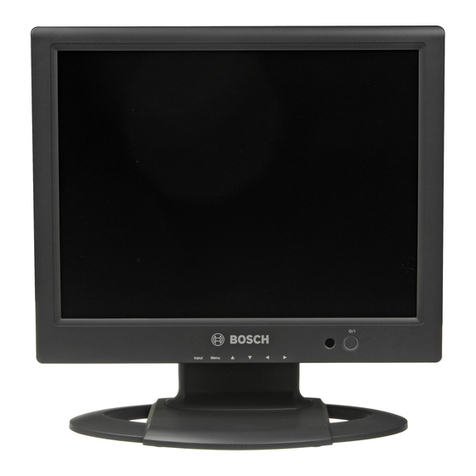
Bosch
Bosch UML-151 User manual
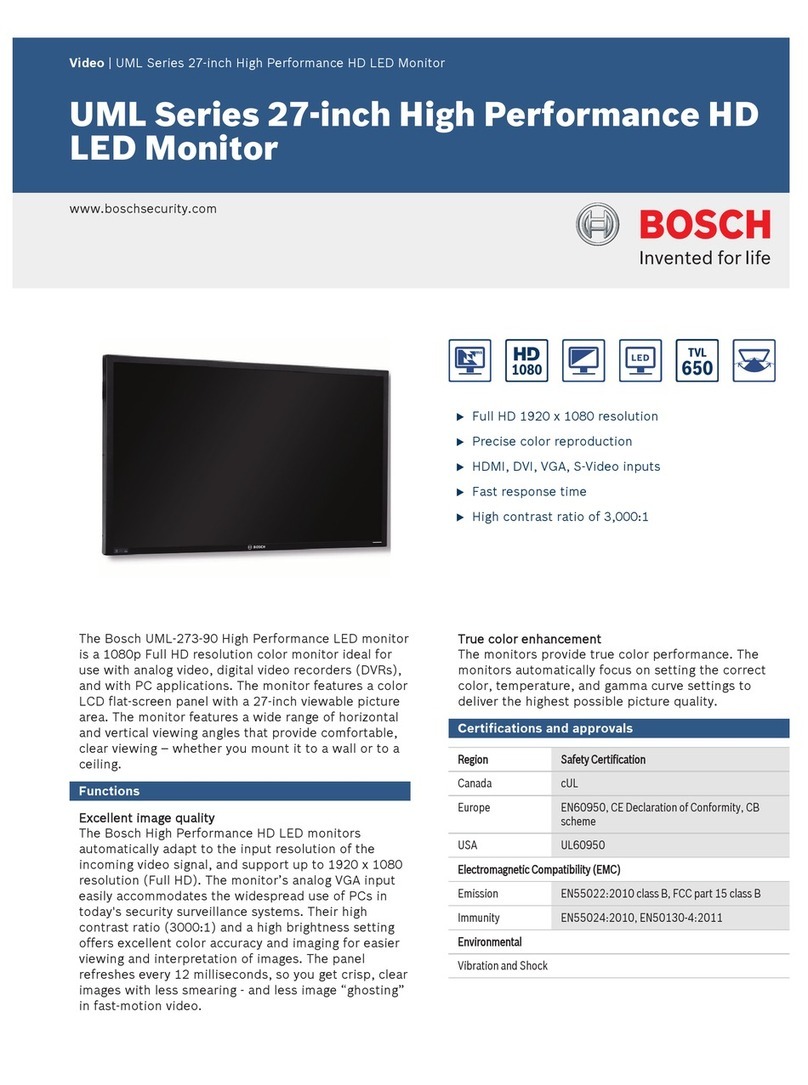
Bosch
Bosch UML-273-90 User manual
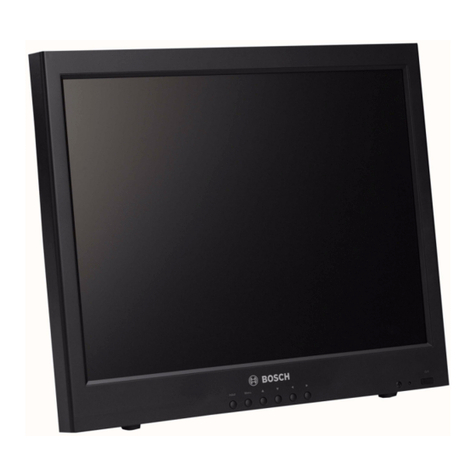
Bosch
Bosch UML-202 User manual
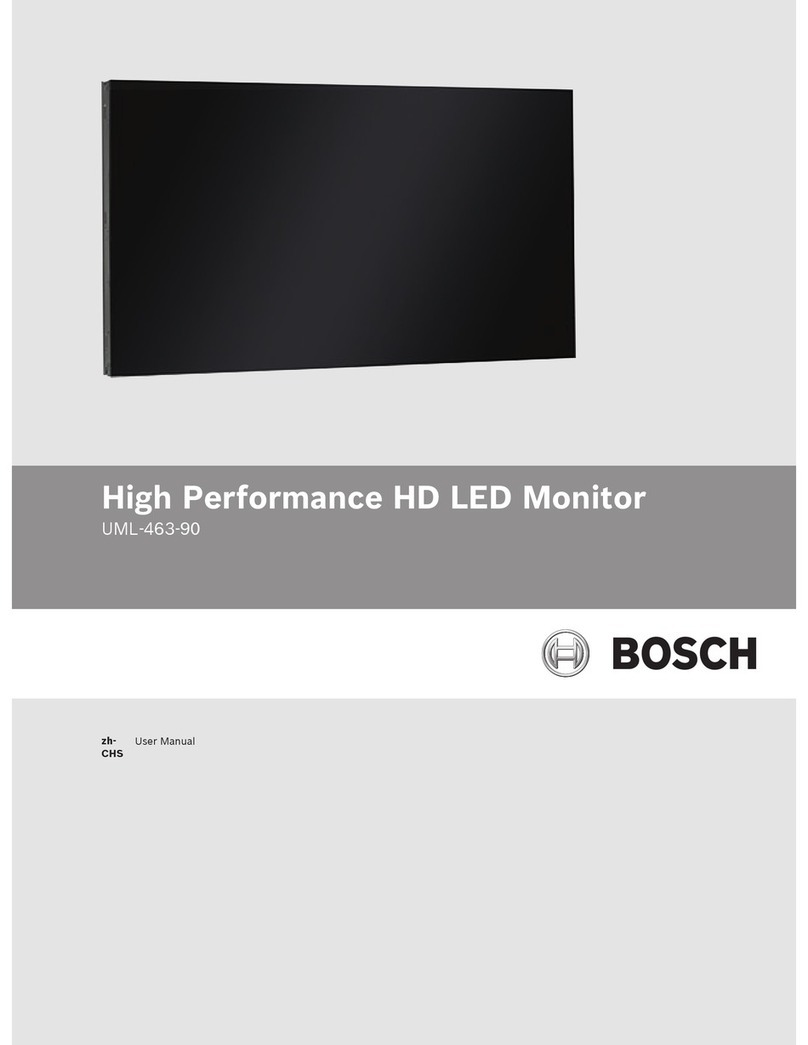
Bosch
Bosch UML-463-90 User manual
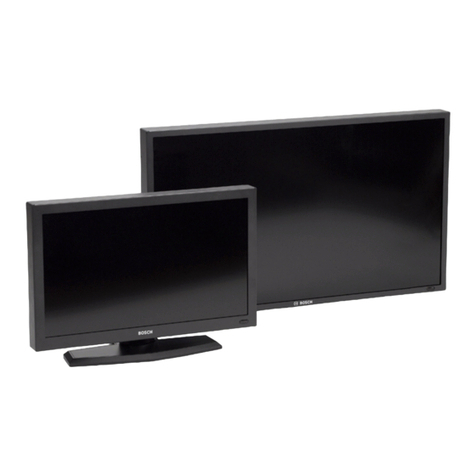
Bosch
Bosch UML-262-90 User manual

Bosch
Bosch LTC 2814/90 Series User manual

Bosch
Bosch LTC 2910/90 User manual

Bosch
Bosch LTC2821/91 User manual

Bosch
Bosch MON150CL User manual

Bosch
Bosch UML-190-90 User manual

Bosch
Bosch LTC 9113/00 User manual
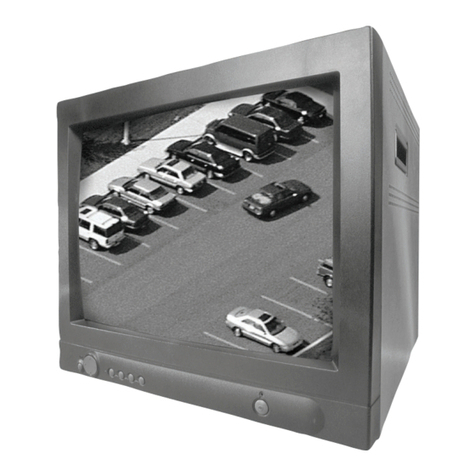
Bosch
Bosch LTC-2917-91 User manual
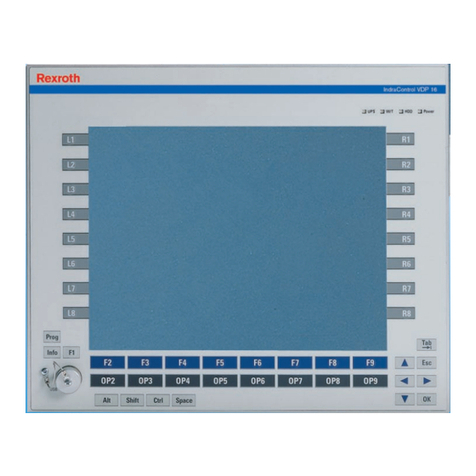
Bosch
Bosch Rexroth IndraControl VDP 16.1 Technical manual
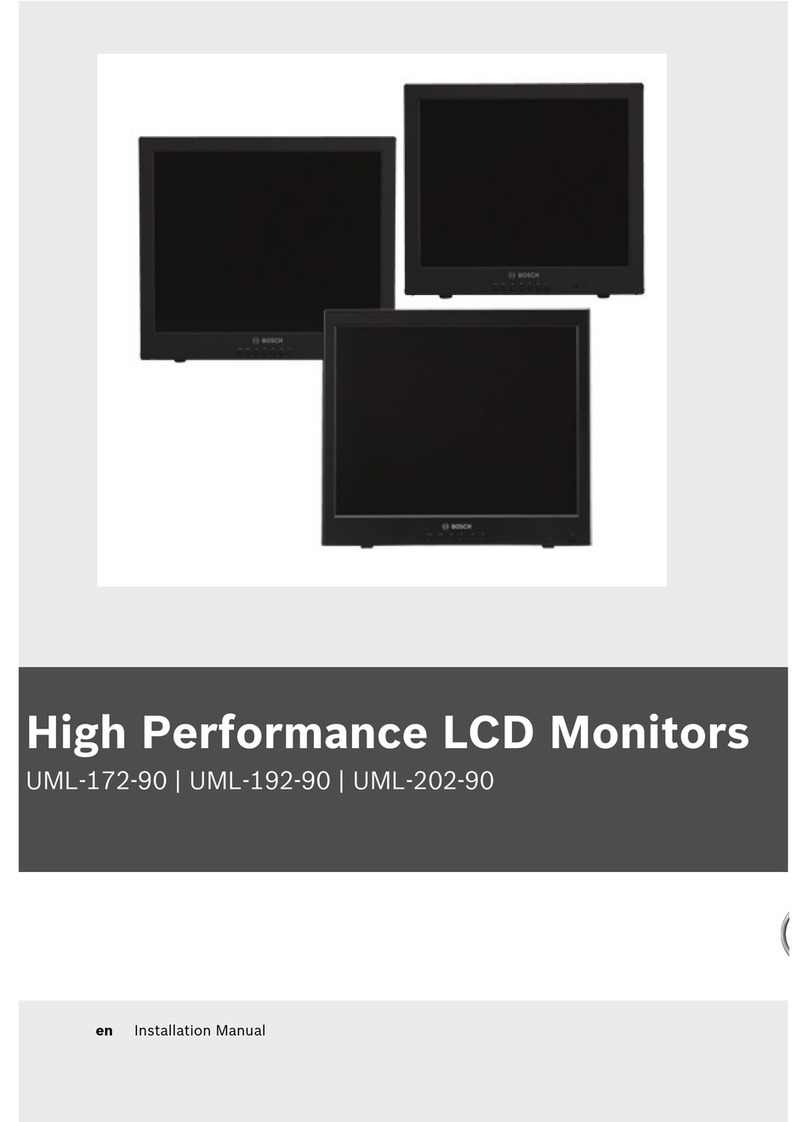
Bosch
Bosch UML-172 User manual

Bosch
Bosch Glasses CM-G 22" User manual
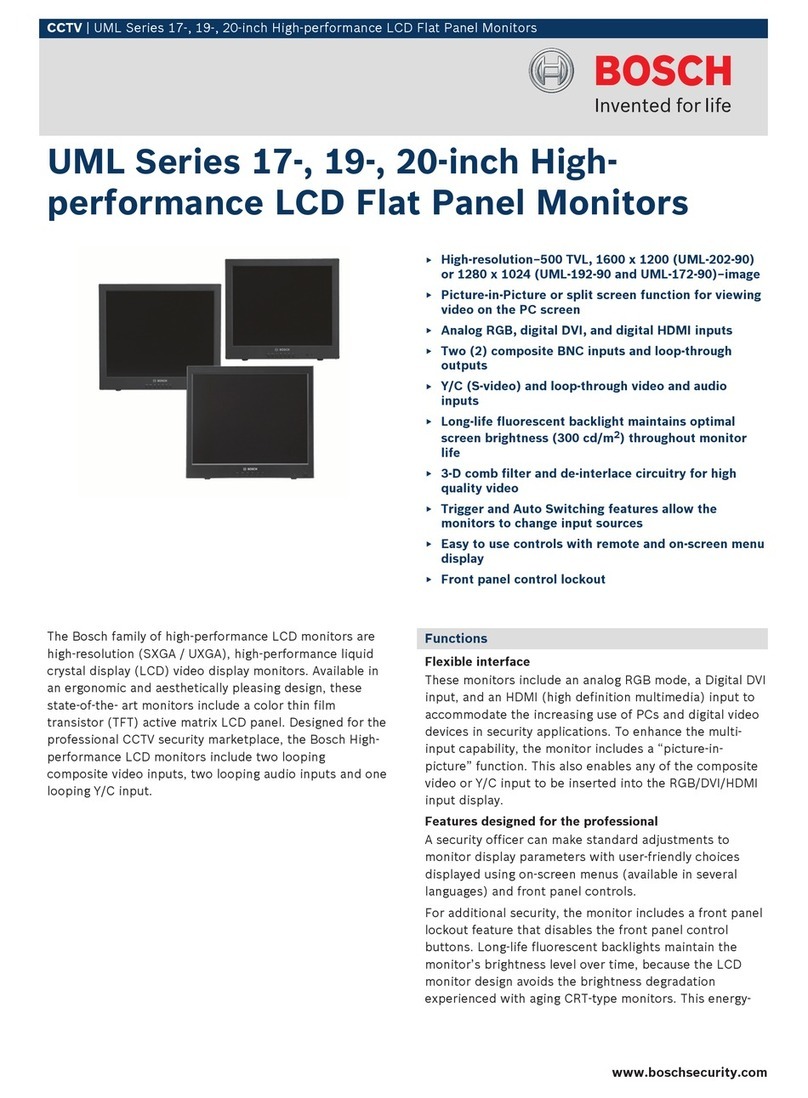
Bosch
Bosch UML-172-90 User manual

